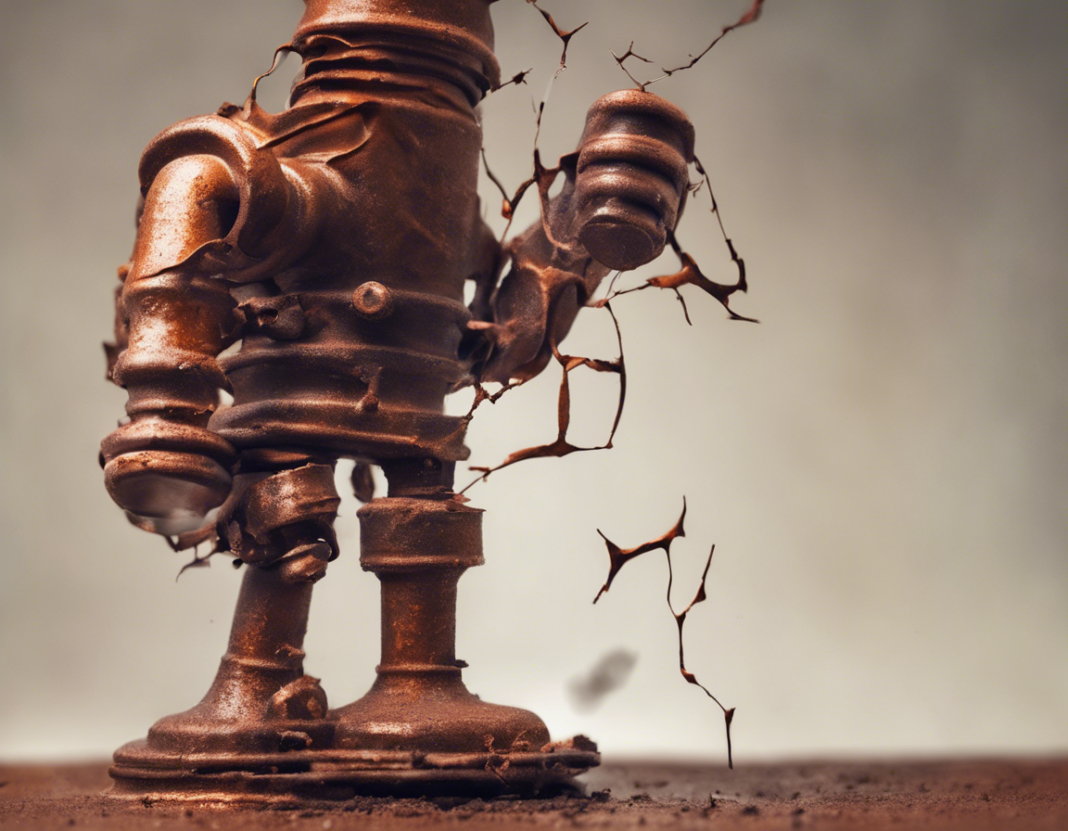Rusting is a common natural phenomenon that occurs when iron and its alloys, such as steel, are exposed to moisture and oxygen for an extended period. This process, also known as corrosion, can be detrimental to the structural integrity and aesthetics of metal objects and surfaces. Understanding the chemical processes involved in rust formation is crucial in implementing prevention and mitigation strategies. In this article, we delve into the intricate world of rusting, exploring the underlying mechanisms, factors influencing the process, preventive measures, and common misconceptions.
The Science Behind Rusting
1. Corrosion Mechanism
Rusting is essentially an electrochemical process involving the oxidation of iron in the presence of water and oxygen. The reaction can be summarized by the following chemical equation:
4Fe(s) + 3O2(g) + 6H2O(l) → 4Fe(OH)3(s)
This equation illustrates the oxidation of iron (Fe) to form iron oxide, commonly known as rust (Fe2O3·nH2O). The presence of water is crucial as it facilitates the transport of ions and electrons necessary for the oxidation of iron.
2. Factors Influencing Rust Formation
Several factors influence the rate and extent of rusting, including:
– Moisture: Water is a key catalyst in the rusting process as it enables the flow of electrons and ions.
– Oxygen: The presence of oxygen in the air is essential for the oxidation of iron to occur.
– Temperature: Higher temperatures generally accelerate the corrosion rate.
– Acidity: Acidic environments can increase the rate of rust formation.
3. Types of Rust
Rust can manifest in different forms, including:
– Red Rust: The most common form, typically visible as a reddish-brown flaky substance.
– Yellow Rust: This type of rust is more powdery and can indicate a slower rate of corrosion.
– Black Rust: Also known as magnetite, this form of iron oxide is more stable and less prone to further corrosion.
Preventive Measures Against Rusting
1. Coatings
- Paints: Applying a coat of paint acts as a barrier, preventing direct contact between iron and moisture.
- Galvanization: Coating iron with a layer of zinc provides sacrificial protection, as zinc corrodes preferentially to iron.
- Powder Coating: This method involves applying a dry powder that is then heated to form a protective layer.
2. Cathodic Protection
Cathodic protection involves creating an electric current to protect the metal surface from corrosion. Methods include sacrificial anodes and impressed current systems.
3. Control of Environmental Factors
- Reducing Moisture: Keeping surfaces dry by proper drainage or the use of desiccants can help inhibit rust formation.
- Regulating Temperature: Storing metal objects in controlled environments can slow down the corrosion process.
Common Misconceptions About Rusting
1. Rust is Irreversible
While extensive rust damage can be challenging to repair, early detection and intervention can prevent further corrosion and potentially reverse minor rusting.
2. Rusting is Purely a Surface Phenomenon
Rust can penetrate deeper into the metal, compromising its structural integrity. Regular inspection and maintenance are essential to address rust early on.
3. Rust is Only Cosmetic
Beyond the aesthetic concerns, rust can weaken metal structures, leading to safety hazards and potential failure.
4. Rusting is Inevitable
While rusting is a natural process, proactive maintenance and protective measures can significantly prolong the lifespan of metal objects.
FAQs About Rusting
1. How Does Rusting Differ From General Corrosion?
- Rusting specifically refers to the corrosion of iron and its alloys, while general corrosion encompasses the degradation of various metals through oxidation reactions.
2. Can Stainless Steel Rust?
- Despite its name, stainless steel can rust under certain conditions, especially when exposed to corrosive substances or a saline environment.
3. Is Rust Harmful to Health?
- Rust itself is not typically harmful to health. However, rusty surfaces can harbor bacteria and pose tetanus risks if one gets cut or scratched.
4. Can Rust Damage be Reversed?
- Minor rusting can be treated and reversed through various methods, including mechanical removal, chemical treatments, and protective coatings.
5. How Can I Prevent Rusting on Outdoor Metal Surfaces?
- Regularly inspecting and cleaning metal surfaces, applying protective coatings, and ensuring proper drainage can help prevent rust formation on outdoor objects.
Rusting represents a captivating interplay of chemical reactions and environmental factors that can significantly impact the longevity of metal materials. By unraveling the science behind rust formation, implementing preventive measures, and dispelling common misconceptions, we can effectively combat this pervasive corrosion process and preserve the integrity of metal structures and objects.
